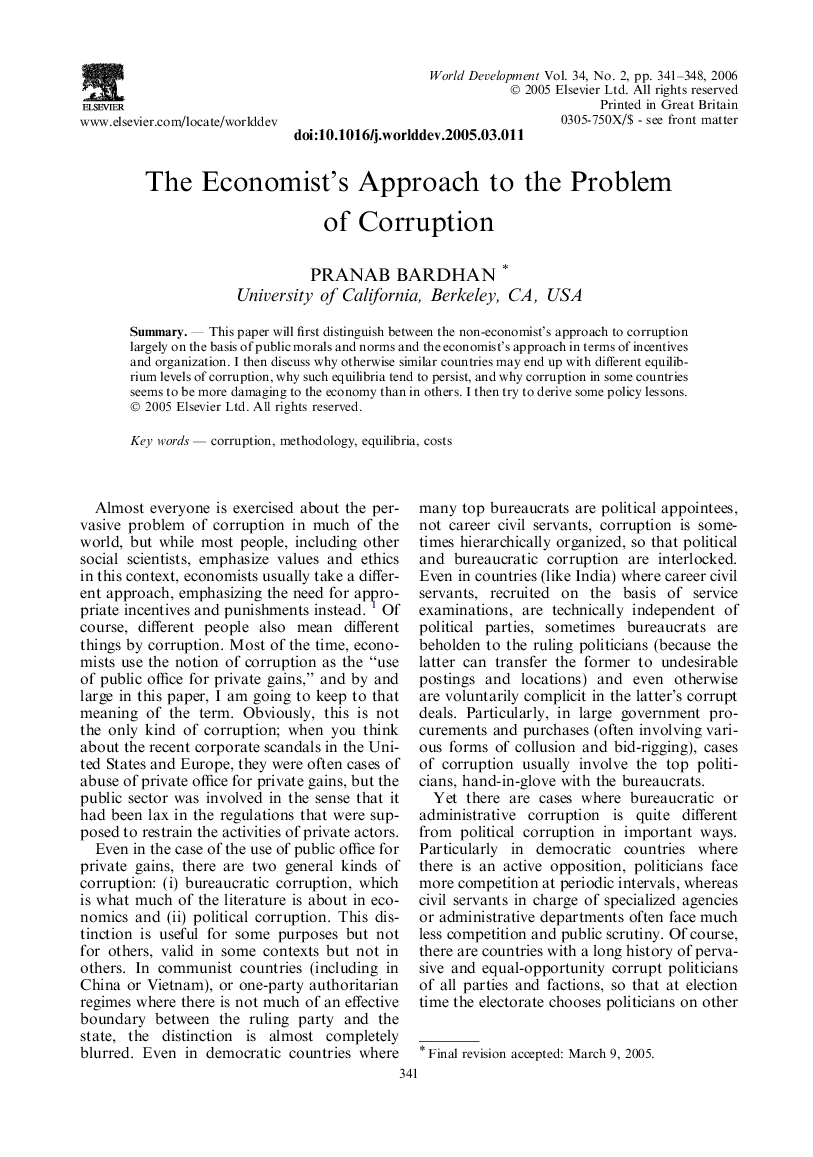| Article ID | Journal | Published Year | Pages | File Type |
|---|---|---|---|---|
| 990109 | World Development | 2006 | 8 Pages |
Abstract
SummaryThis paper will first distinguish between the non-economist’s approach to corruption largely on the basis of public morals and norms and the economist’s approach in terms of incentives and organization. I then discuss why otherwise similar countries may end up with different equilibrium levels of corruption, why such equilibria tend to persist, and why corruption in some countries seems to be more damaging to the economy than in others. I then try to derive some policy lessons.
Keywords
Related Topics
Social Sciences and Humanities
Economics, Econometrics and Finance
Economics and Econometrics
Authors
Pranab Bardhan,
